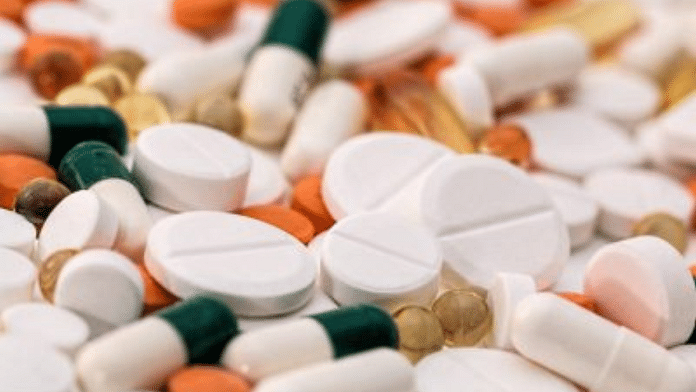New Delhi: The Union Health Ministry Friday announced that the first four made-in-India drugs for rare diseases, also called orphan diseases, which will bring down costs of the medicines by up to hundred-fold, have been launched in the country this year.
All drugs used for treating rare diseases were so far being imported and were prohibitively expensive, often forcing people to crowdfund treatment.
“As part of the National Policy on Rare Disease, an initiative in collaboration with government agencies and drugmakers had been started last year and 13 priority rare diseases, along with sickle cell anemia, had been identified for which India made drugs were to be developed,” a senior ministry official said at a press briefing.
The drugs that are being launched as part of the initiative, said the official, are going to be the “game-changer” and will bring upon a paradigm shift in the rare disease treatment landscape in the country and other low income nations.
A rare disease is a health condition of a particularly low prevalence that affects a small number of people — less than 1 per 1,000 according to the World Health Organisation (WHO) — but collectively afflicts about 6-8 percent of the population in any country at any given time.
Nearly 80 percent of these diseases are genetic in nature.
According to details shared by the health ministry, India could have a total of 8.4-19 crore rare disease cases. There are over 700 diseases categorised as rare diseases but the government says that less than 5 percent have therapies available to treat them.
“As part of the exercise”, the official said, 6 out of the 13 prioritised rare diseases were identified as “low hanging fruits” and work began last year to develop 8 drugs for them.
“Of these, four have been approved now while four more are likely to get the approval from the Central Drugs Standard Control Organisation by early next year,” he added.
In addition, for sickle cell disease — for whose elimination the Union government had launched a national programme this year — an Indian generic drugmaker, Akums pharma, has developed an oral suspension form of the drug Hydroxyurea, used in treating the condition.
“As of now, the pediatric patients of this condition mostly cannot avail treatment because the syrup Hydroxyurea is not freely available and cost of the oral suspension, when procured, can go up to Rs 70,000 per 100 ml,” the ministry official also said.
He added that the tentative cost of the locally produced drug, which is due for regulatory approval as of now, will be Rs 405 per 100 ml.
Sickle cell anemia is a common condition among the tribal population and affects the shape of red blood cells which carry oxygen to all parts of the body.
India is among the countries with one of the highest burden of the disease globally, second only to Nigeria and some tribal communities in the country report as many as 40 percent of the population affected.
Diseases and drugs
The diseases for which the generic drugs have been developed include Tyrosinemia Type 1, which is characterised by jaundice, liver failure, liver cancer. Untreated patients die by the time they are around 10 years of age.
The imported drug for the disease, Nitisinone, currently costs Rs 2.2- 6.5 crore per year depending on the body weight of the child.
The generic version of the drug launched by Laurus Labs and Zenara Pharma will bring down the cost of the drug to Rs 2.5 lakh per annum.
The other disease for which indigenously developed drug is now available in the country includes Gaucher’s disease, which causes liver or spleen enlargement, bone pain or crisis and acute fatigue.
The imported drug for this ailment costs Rs 1.8-Rs 3.6 crore, but the drug launched in India by Zenara Pharma has been priced at Rs 3-6 lakh per annum.
The third disease for which the indigenous medicine will be available now is Wilson’s disease, whose symptoms include copper deposit in liver, brain, cornea, psychiatric symptoms and destruction of red blood cells. The imported version for the drug used to treat the disease costs Rs 1.8 to Rs 2.1 crore per annum but the generic versions launched by Laurus Labs and MSN Pharma will bring down the cost to Rs 2.2 lakh per annum.
Another disease for which locally produced drugs have been made available is Dravet or Lennox-Gastaut Syndrome which results in complex and difficult to treat seizures. Cannabidiol oral solution used in treating it costs Rs 6-20 lakh per annum for children weighing 5-20 kg.
But the generic drug developed by Zenara Pharma will bring down the cost to Rs 1-5 lakh every year.
The other diseases for which India made generic medicines are in the pipeline next year include Phenylketonuria — which leads to patients having small heads, mental retardation and seizures — and hyperammonemia which is a complex metabolic condition.
“Not only will these drugs bring down the cost of treatment for Indian patients but can be supplied to other countries as well,” the official quoted earlier said.
He added that pharma companies were not making drugs for these conditions earlier due to less lucrative commercial opportunities but have now come forward after the call by the government.
Last year, the government had decided to hike the monetary support offered to patients suffering from rare diseases from Rs 20 to 50 lakh, covering all conditions through the designated hospitals.
(Edited by Gitanjali Das)
Also read: Govt closely monitoring H9N2 case, pneumonia outbreak in China, but ‘low risk to India’



